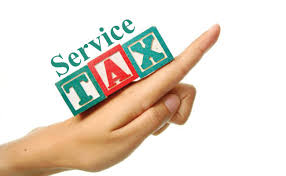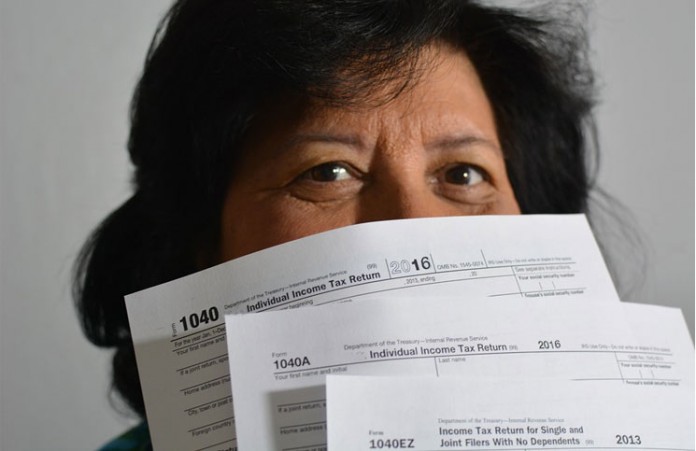In this blog post, Raghav Gautam, a Delhi-based Advocate, practising Civil Commercial Laws (General Corporate Advisory), details the steps a company or a business ought to take if they receive a legal notice from Tax Authorities.
The recent developments in the Tax reporting regime have elevated the level of agility and alertness of the Tax authorities in India and have led to the easy identification of the tax evaders and plain tax defaulters. They may be in the form of organisations or individuals. The ramification of such advancement is that there is a surge in the actions taken by the Tax authorities against businesses and the same has led to more litigation and an environment of insecurities amongst the business class. The biggest reason for insecurity amongst the businesses is due to the probable reputational harm and additional financial burden that the organisations might have to face, post issuance of these notices.
The most important concern for a business is as to how can these notices be dealt with in the most optimum manner, thereby avoiding any litigation or disciplinary actions against the business?
The relevant notice would be issued by the concerned tax authorities for the kind of tax collection and regulation that it is regulated. Let’s take a look at some of the taxes given below.
Excise Duty (Indirect Tax)
As we know, Excise duty is imposed on the goods produced and manufactured throughout the territory of India. The Excise duty is also known as CENVAT or Central Value Added Tax (based on the “tax credit” provided to every person who adds value to goods and has paid its part of tax). As per Section 11A of the Central Excise Act, 1944, the tax authorities issue a “Show – Cause Notice” against an Assessee when the tax has been Not paid, Short Paid, CENVAT credit is wrongly availed, misclassification or for the purpose of imposition of penalties. The notice issued by the tax authorities comes with a timeline like in other cases, towards the fulfilment of the non-compliance or payment of taxes.
Duty Not Paid/Errouneously Paid/Short Paid
In cases where the duty payable or paid is in question as mentioned hereinabove, the authorities have a window of 1 year to serve the Show Cause Notice against the defaulting party. The same period can be extended to 5 years by the authorities in cases where duty has been short-paid/not paid due to fraud, collusion, willful misstatement, suppression of facts or any contravention of Act or rules with the intention of evading the tax payable.
After the notice is received by the Assessee, it has the option of either, accepting the tax demanded by the authority and paying the amount with an additional payment of interest and 25% of the assessed amount as penalty as stated under Section 11AB of the Act, OR refusing the assessment by replying to the Notice and proceeding towards the final adjudication of the correct assessable amount by way of hearing before the concerned Adjudicating Officer. The authorities are required to dispose of the matter by way of a final order within a matter of 3 hearings maximum. The dispute must be preferably decided by the Authorities within a period of 6 months in normal cases and 1 year in special cases, if possible. The authorities would either drop the demand or accept it partially or fully as per the decision of the Adjudicating officer. The same order will have to be issued in writing, within a period of 30 days from the date of final personal hearing.
It is imperative that the proceedings under this section should be based on the principles of natural justice and the same should reflect in the notice issued by the Authorities. The notice should be clear and precise with the relevant evidence attached. The flouting of rules/law alleged should be specified along with the penalty imposable (if proposed or possible). The grounds of violation of tax law and demand of the tax payable cannot be different. The option of reaching out to the court against the service of a notice from the court can also be gauged by the Assessee beforehand. In such a case the authorities will exclude the period of stay in an issuance of notice and requisite period of 1 year or 5 years, as required. Also, in the case where the authorities are extending the time of issuance of notice it must be intimated to the assessee in the Show Cause Notice in detail as held by the Hon’ble Supreme Court in the matter of Commissioner of Central Excise Vs.H.M.M, Ltd –1995 (76) ELT 497.
If the notice served by the Tax authorities does not fulfil the basic criteria of the establishment of all the relevant facts, it must be highlighted by the assessee in its reply against the notice. The reply must be comprised of all the relevant data and the corresponding evidence by which the assessee can justify and prove its innocence and rationale behind the non-payment of certain taxes. The concerned expert a tax lawyer or a Chartered Accountant in the area of taxation must be consulted, and the reply must be precise and clear with regard to the questions asked in the Show Cause Notice.
Service Tax
The Service Tax in India is governed by the Finance Act, 1994 and the Service Tax, Rules. The Notices issued under the Service Tax regime is for obvious reasons not much different in process pertaining to the Excise Duty. The Authorities have the power to issue a Show Cause Notice to the Assessee, who is a part of the Service industry in India as a Service provider in any form and derives its livelihood from this industry. Under Section 73(1) of the Finance Act, 1994, the Authorities may issue a show cause notice when they have a reason to believe that the concerned person has Short paid/not paid the service tax or the payment has not been levied or short levied or erroneous refund has happened. The Show Cause Notice will have to be issued within a period of maximum 18 months from the relevant date by the concerned officer.
The limitation period of 18 months will be extended further to 5 years in cases where the service tax has not been levied or paid or has been short-levied or short paid or erroneously refunded by reason of fraud, collusion, misstatement (wilful), suppression of facts, contravention of any of the provisions of the law or of the rules made thereunder with intent to evade payment of service tax.
Section 73(2) of the Act states that the concerned officer has the authority to issue a statement after the issuance of the first notice to the exclusion of a period of 18 months, but the subsequent period towards the same reasons as mentioned above. The same statement shall be deemed to be an equivalent of a service of notice on the Assessee.
The notice served by the Officer concerned (mainly on the Deputy, Principal or Chief Commissioner level as defined in Section 2(b) of Central Excise Act, 1944 (the Central Excise Officer has the authority in case of Service Tax) must be complete and precise. In case there are any discrepancies with regard to the tax demanded and the basis of the demand made by the authorities concerned, the assessee in such a case must highlight the same in reply to notice received.
Income Tax
The Income Tax Department had initiated a scheme for filtering the non-compliant Assesses, including assesses involved in high-value transactions. The pilot projects initiated by the govt. is known as Non-Filers Monitoring System (NMS). The IT Department filters the details of the non-filers through various sources such as:
- TDS or TCS statements;
- Centralised Information Branch; and
- Annual Information Return.
The Income tax authorities most of the time send notices through e-mails or even through SMSes. The response to the same can be submitted through online mode, i.e. through the e-filing. The assessee simply needs to login with their ID and file their response in the Compliance section of the website.
In some cases, the IT department attains the information regarding the third party transaction and the same can also be clarified on the website of the IT Department by the Assessee. Third party transactions mean e.g. when the assessee has invested money in some form of investment with an organisation wherein they might have deposited TDS with regard to the same. In such cases, the assessee needs to mention the same as specified on the website and it will be reported.
Further, the relevant Section(s) under the Income Tax Act, 1961 in this regard are Section 142 (1) and 143 (2). Section 142(1) is sent to a person only when the IT Department is in the initial phases of the analysis of the person’s taxable income. At the very preliminary stage, the department asks the taxpayer to disclose any details on income, investments, tax paid, assets and liabilities. The request from the side of IT Department might be a connection with the person concerned or anyone associated with him/her, who he/she is representing for the purposes of taxation.
Section 143(2) states that a NOTICE under this section shall be served to the Assessee within a period of 12 months from the end of the month in which the assessee filed his return with the Income tax authorities. For the making the work of the tax authorities even more comfortable, the clause (ii) to Sub-section 2 of Section 143 states that the Authorities that the notice under 143(2) shall be within a period for 6 months from the date of the end of the financial year in which the Assessee filed his return.
The Notice issued under Section143 (2) is issued only after the Income Tax authority is certain that the tax deposited is insufficient or the assessee possesses a refund claim against the tax deposited by him.
Reassessment
Section 148 of the Income Tax Act stipulates that in cases where the AO (Assessing Officer) is of the opinion that a certain portion of the income earned by the Assessee needs to be revisited for the purpose of assessment of the fact whether it is taxable or not, the same shall be preceded by issuance of a Notice under Section 148 by the authorities against the Assessee.
 The relevant notice as issued by the AO must state in clear terms the grounds of belief in such information on his part. The basis of the material evidence available and the requirement of reassessment on those grounds must be stated by the AO in the Notice. The assessee will have to reply to the notice with all the relevant evidence. The assessment of tax done by the Department in relation to huge corporate clients must be taken seriously by the relevant department of the business, since this might lead to escalated levels of dispute, point in case being the Vodafone Tax case.
The relevant notice as issued by the AO must state in clear terms the grounds of belief in such information on his part. The basis of the material evidence available and the requirement of reassessment on those grounds must be stated by the AO in the Notice. The assessee will have to reply to the notice with all the relevant evidence. The assessment of tax done by the Department in relation to huge corporate clients must be taken seriously by the relevant department of the business, since this might lead to escalated levels of dispute, point in case being the Vodafone Tax case.
The reason behind the requirement for such responsive attitude towards the notices issued by the AO against the income of the businesses is the high rates of penalty provisions under various sections of the IT Act, 1961:
- Section 271(1)(c) – Penalty of 100-300% of tax stated to have been evaded on Transfer Pricing Adjustment. In other words concealment of or wrong information pertaining to the income.
- Section 271AA – 2% of the value of the international or domestic transaction. The failure to report the transaction and non-maintenance of proper documents and furnishing of incorrect information.
- Section 271BA – Penalty for failure to furnish the Accountant’s report in form 3CEB.
Conclusion
With the expansion of Value Added Tax into the indirect taxes in the form of GST, further deep, the various advantages of reduction in the cascading effect and reporting on different scales will improve considerably. The government needs to bring more clarity in case of taxes applicable on high stake transactions under the indirect taxes and there must be more initiative with regard to the reduction of litigation within pertinence to the direct tax system and compliance, so that the business community and individuals could attain the financial freedom of entering into ventures and agreements without any financial apprehensions from the side of Government.
 Serato DJ Crack 2025Serato DJ PRO Crack
Serato DJ Crack 2025Serato DJ PRO Crack









 Allow notifications
Allow notifications



